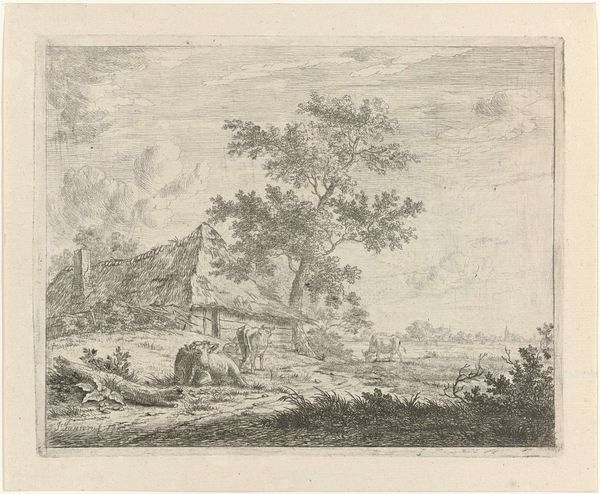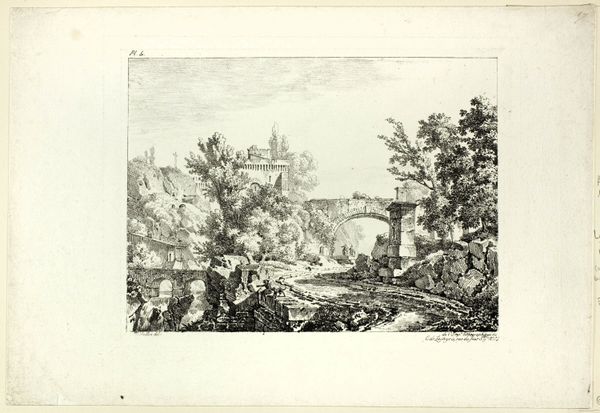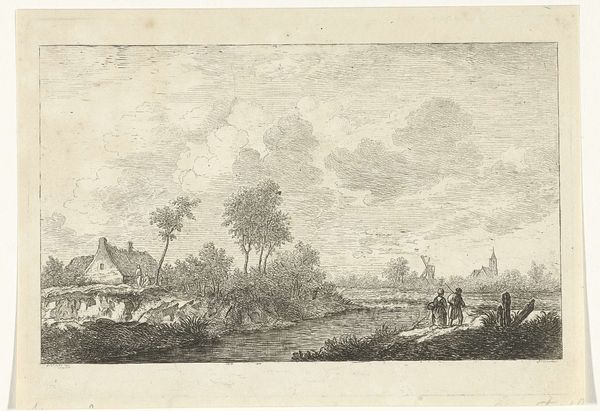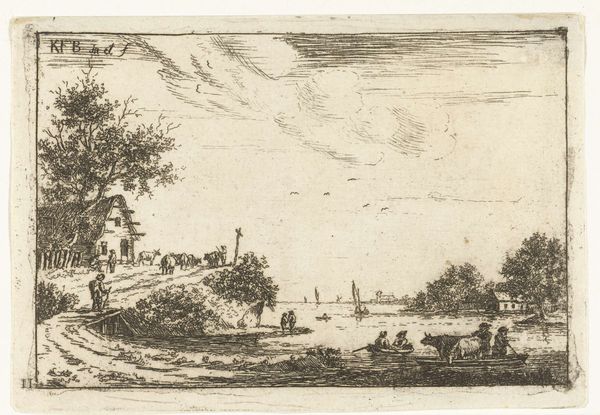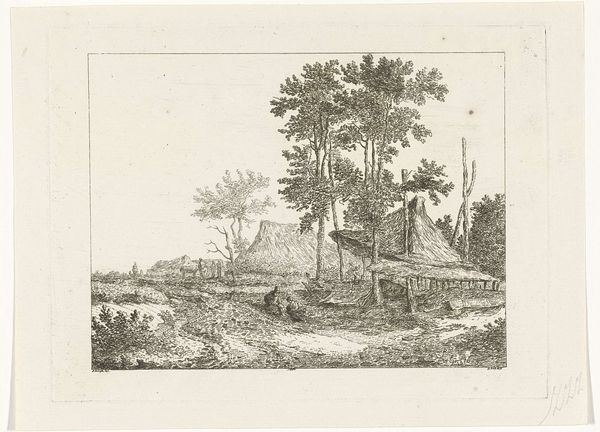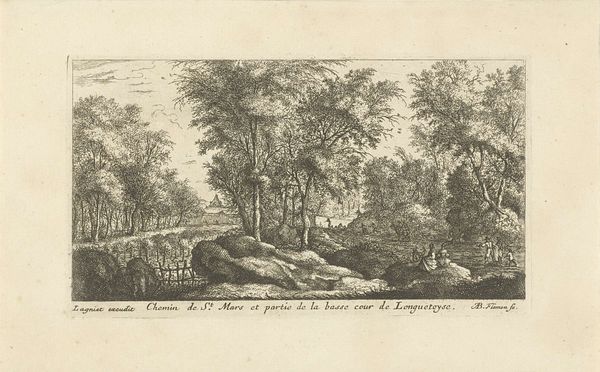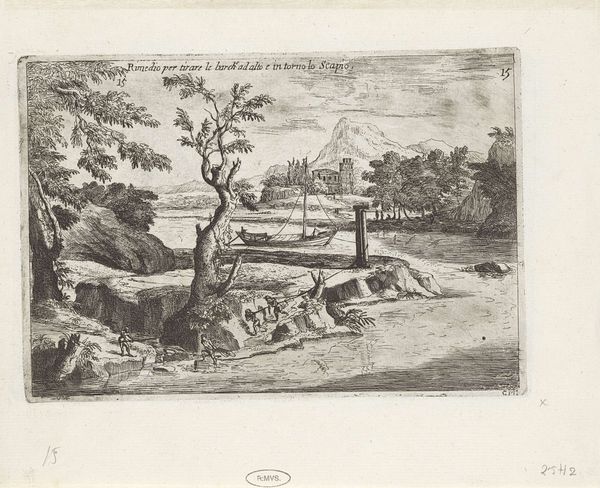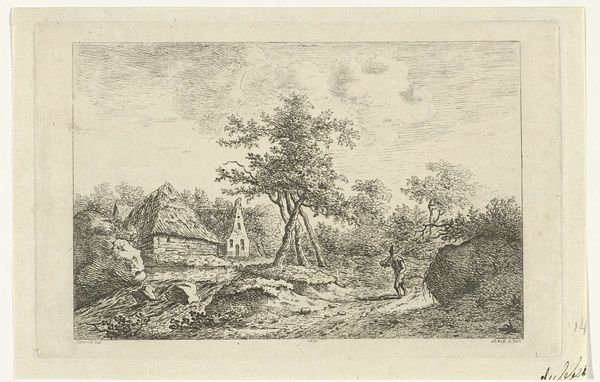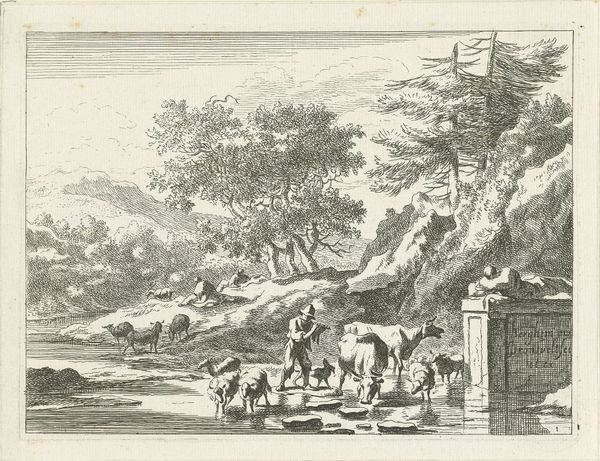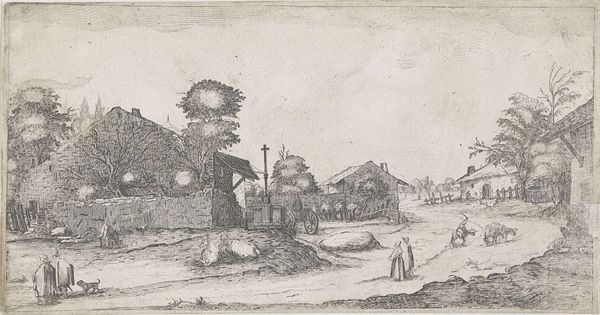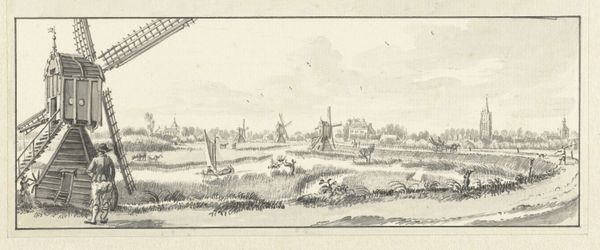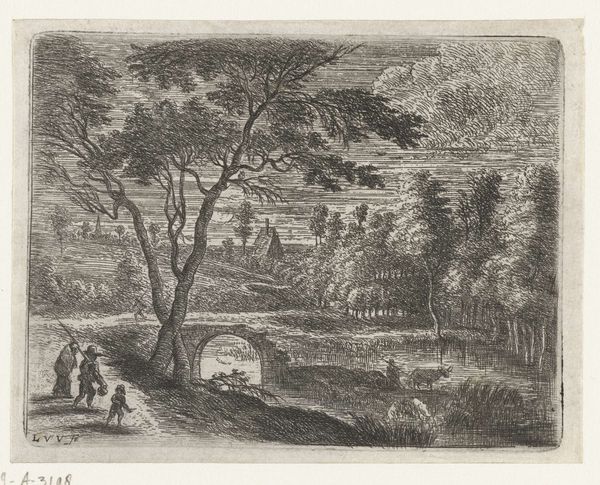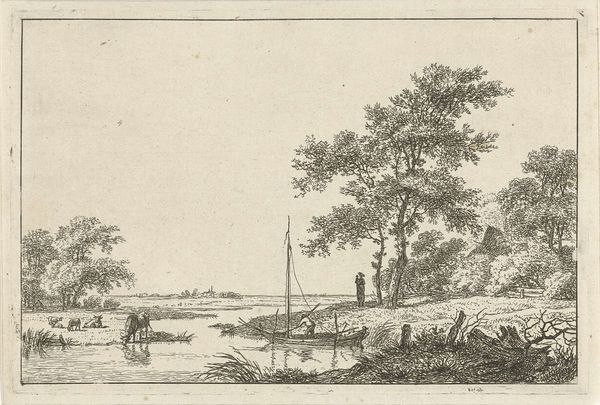
print, engraving
#
dutch-golden-age
# print
#
old engraving style
#
sketch book
#
landscape
#
personal sketchbook
#
idea generation sketch
#
sketchwork
#
pen-ink sketch
#
pen work
#
sketchbook drawing
#
cityscape
#
storyboard and sketchbook work
#
sketchbook art
#
engraving
Dimensions: height 69 mm, width 97 mm
Copyright: Rijks Museum: Open Domain
Curator: Immediately, I'm struck by the idyllic atmosphere. There's something quite charming about this tranquil village scene rendered in such detail, considering the modest size of the engraving. Editor: This engraving, known as "Dorpsgezicht met stenen bruggetje," or "Village Scene with a Small Stone Bridge," is attributed to Anthonij van der Haer and likely dates from around 1745 to 1785. It’s a fantastic example of the kind of landscape imagery popular during the Dutch Golden Age, even though its production was later. Curator: The artist’s use of line is quite remarkable. Notice how varying the density and direction of the marks creates texture and suggests light and shadow across the composition. The textures, while appearing simple, are richly varied when examined closely. Editor: The presence of a church positioned prominently in the background certainly tells us something about the societal values of the time. These scenes weren’t just picturesque; they projected ideals of order, piety, and prosperity—visual cornerstones of the developing Dutch identity. It seems to imply some idealization of the artist. Curator: I agree, and it contributes to the feeling of serene observation. There’s a certain detachment—we're given access to this quaint tableau as outside viewers, removed from its quotidian realities. Editor: Indeed. And it's fascinating to see how such images became emblematic of Dutch cultural confidence. Printmaking allowed for the widespread distribution of such scenes, effectively propagating certain cultural values and social norms far beyond the village itself. In a way, we’re looking at a carefully constructed form of cultural propaganda. Curator: A fitting point, particularly when we observe how balanced the composition is. We can perceive visual harmony through symmetry which evokes themes of community and faith. Editor: Examining such a piece encourages one to look deeper into the relationship between artistic representation and societal formation, and to appreciate both the aesthetics of the image and the narratives embedded within it. Curator: I concur, allowing us to see the intersection of personal artistry and the wider public sphere is really eye-opening.
Comments
No comments
Be the first to comment and join the conversation on the ultimate creative platform.

